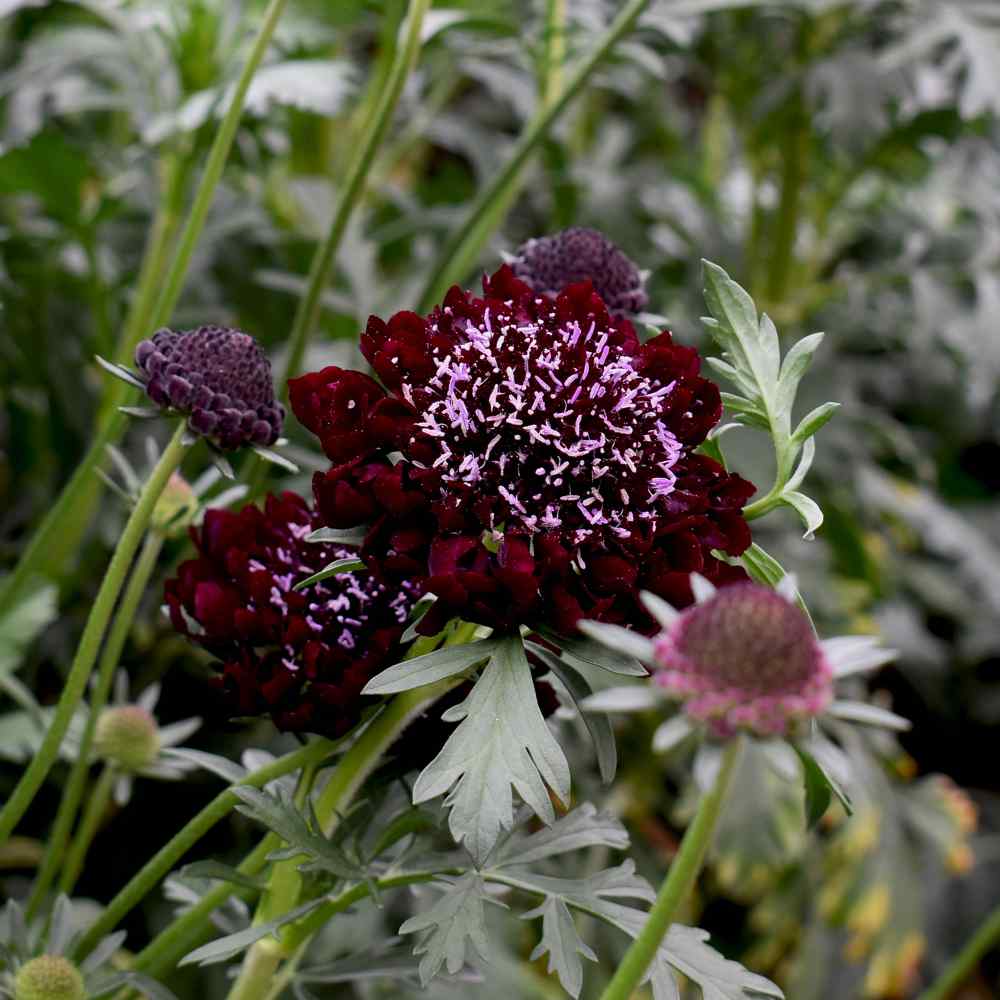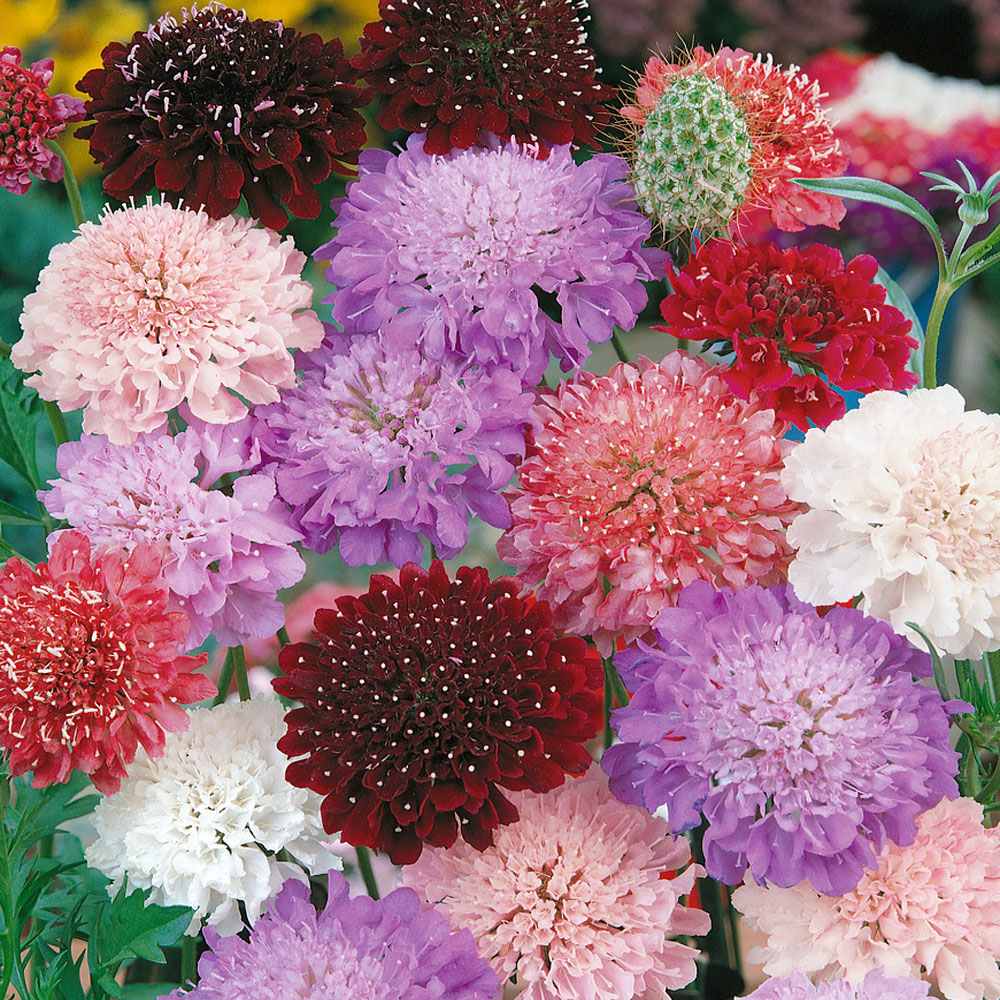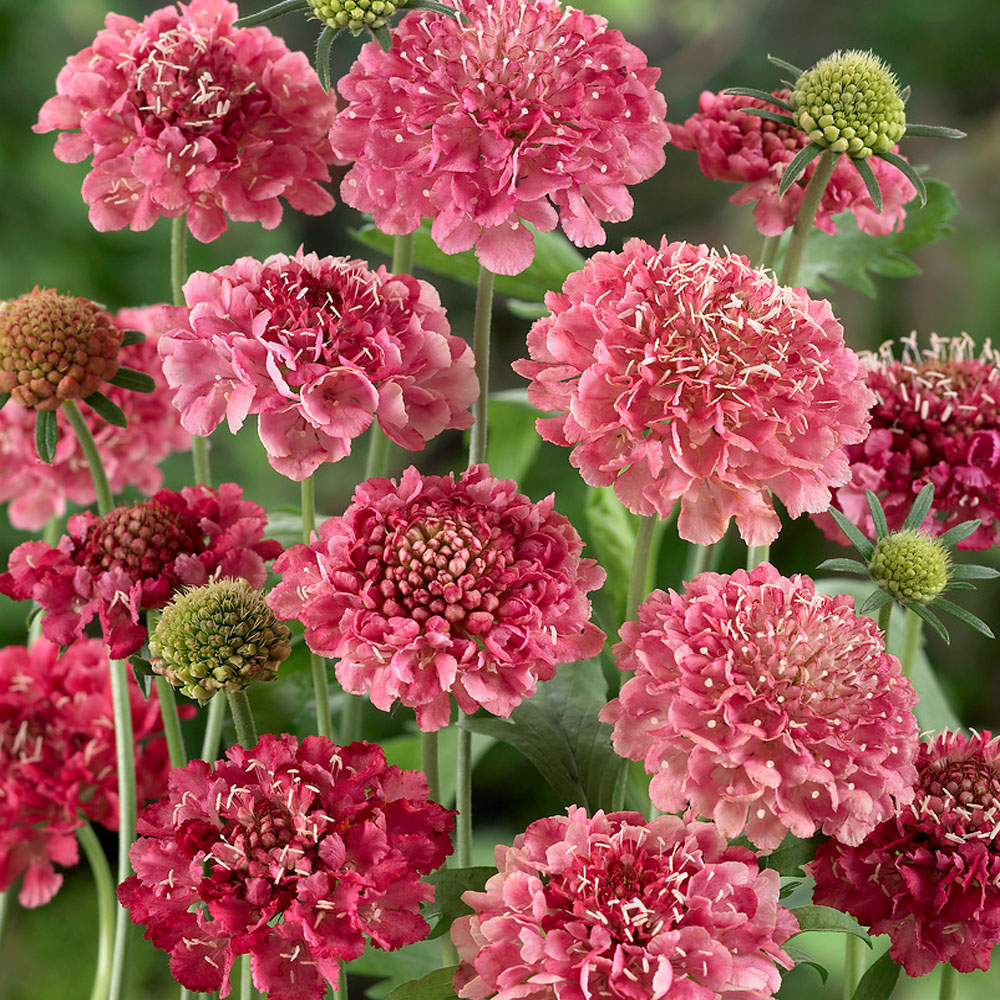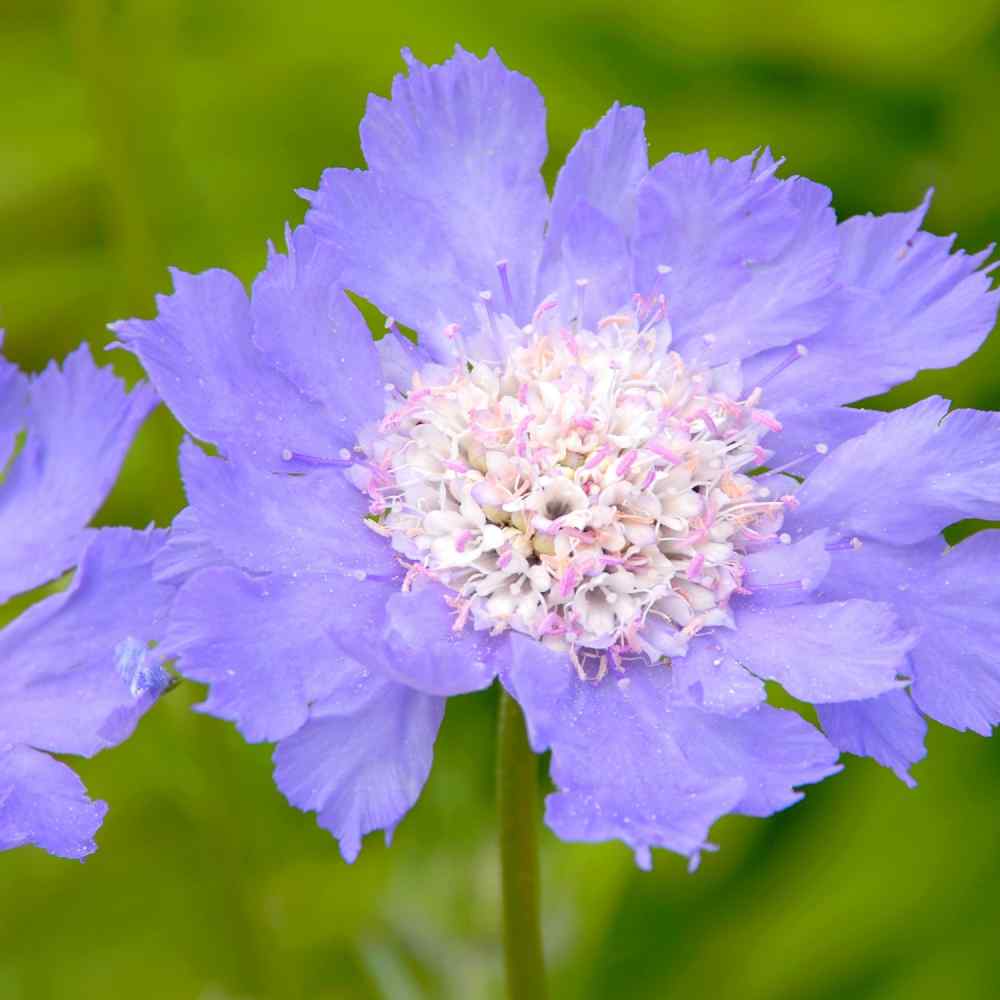
Scabiosa Planting and Care Guide
Quick Facts About Scabiosa
Gardeners everywhere appreciate the attributes of Scabiosa. Also known as Pincushion Flower, these attractive drought tolerant annuals establish nicely from Scabiosa seed. Rose Pincushion Flower is a delight to grow offering both lovely, showy blooms along with a long flowering season. Scabiosa Pincushion is a treasured favorite among xeriscape gardeners and butterflies and other beneficial insects adore it as well. In addition to being attractive in the garden, the Scabiosa Pincushion Flower is also excellent for cutting, drying or pressing.
Planting Time
Sow Scabiosa seed indoors 10 weeks before the desired planting date. Sow the seeds and press the red Scabiosa Flower seeds gently into the starter mix. Keep the seed moist until germination. Pincushion seeds can also be sown directly outdoors after danger of frost has passed, but they will be very late to bloom.

Planting Location
Select a location in full sun or light shade in soil that drains well. Most plants respond well to soils amended with organic matter. Compost is a wonderful form of organic matter with a good balance of nutrients and an ideal pH level, it can be added to your planting area at any time. If compost is not available, top dress the soil after planting with 1-2 inches of organic mulch, which will begin to breakdown into compost. After the growing season, a soil test will indicate what soil amendments are needed for the following season.
How to Plant Scabiosa
Indoor Planting Guide
- Sow indoors 4-6 weeks before last expected heavy spring frost
- Sow evenly and thinly and cover with ¼ inch of seed starting formula
- Keep the soil moist at 70-75 degrees F
- Seedlings emerge in 10-21 days
- As soon as seedlings emerge, provide plenty of light on a sunny windowsill or grow seedlings 3-4 inches beneath fluorescent plant lights turned on 16 hours per day, off for 8 hours at night. Raise the lights as the plants grow taller. Incandescent bulbs will not work for this process because they will get too hot. Most plants require a dark period to grow, do not leave lights on for 24 hours.
- Thin to one seedling per cell when they have two sets of leaves.
- Seedlings do not need much fertilizer, feed when they are 3-4 weeks old using a starter solution (half strength of a complete indoor houseplant food) according to manufacturer’s directions.
- Before planting in the garden, seedling plants need to be “hardened off”. Accustom young plants to outdoor conditions by moving them to a sheltered place outside for a week. Be sure to protect them from wind and hot sun at first. If frost threatens at night, cover or bring containers indoors, then take them out again in the morning. This hardening off process toughens the plant’s cell structure and reduces transplant shock and scalding.
Outdoor Planting Guide
- Sow in full sun or light shade and well-drained soil after all danger of frost.
- Prepare the soil by removing weeds and working organic matter into the top 6-8 inches of soil; then level and smooth.
- Most plants respond well to soils amended with organic matter. Compost is a wonderful form of organic matter with a good balance of nutrients and an ideal pH level, it can be added to your planting area at any time. If compost is not available, top dress the soil after planting with 1-2 inches of organic mulch, which will begin to breakdown into compost. After the growing season, a soil test will indicate what soil amendments are needed for the following season.
- Sow thinly and evenly and cover with 1/8 inch of fine soil.
- Firm lightly and keep evenly moist.
- Seedlings emerge in 10-21 days depending on the soil and weather conditions.
- Thin to stand about 12 inches apart when seedlings are 1-2 inches high.

Care And Maintenance
- Keep weeds under control during the growing season. Weeds compete with plants for water, space and nutrients, so control them by either cultivating often or use a mulch to prevent their seeds from germinating.
- Mulches also help retain soil moisture and maintain even soil temperatures. For annuals an organic mulch of shredded leaves lends a natural look to the bed and will improve the soil as it breaks down in time. Always keep mulches off a plant’s stems to prevent possible rot.
- Plants need about 1 inch of rain per week during the growing season. Use a rain gauge to check to see if you need to add water. It's best to water with a drip or trickle system that delivers water at low pressure at the soil level. If you water with overhead sprinklers, water early in the day so the foliage has time to dry off before evening, to minimize disease problems. Keep the soil moist but not saturated.
- Until plants become established, some protection from extreme winds and direct, hot sunlight may be necessary. Good air movement is also important.
- After new growth appears, a light fertilizer may be applied. Keep granular fertilizers away from the plant crown and foliage to avoid burn injury. Use low rates of a slow release fertilizer, as higher rates may encourage root rot.
- Remove spent flower heads to keep plants flowering until fall.
- Monitor for pests and diseases. Check with your local Cooperative Extension Service for pest controls recommended for your area.
- Remove plants after they are killed by frost in fall to avoid disease issues the following year.




































